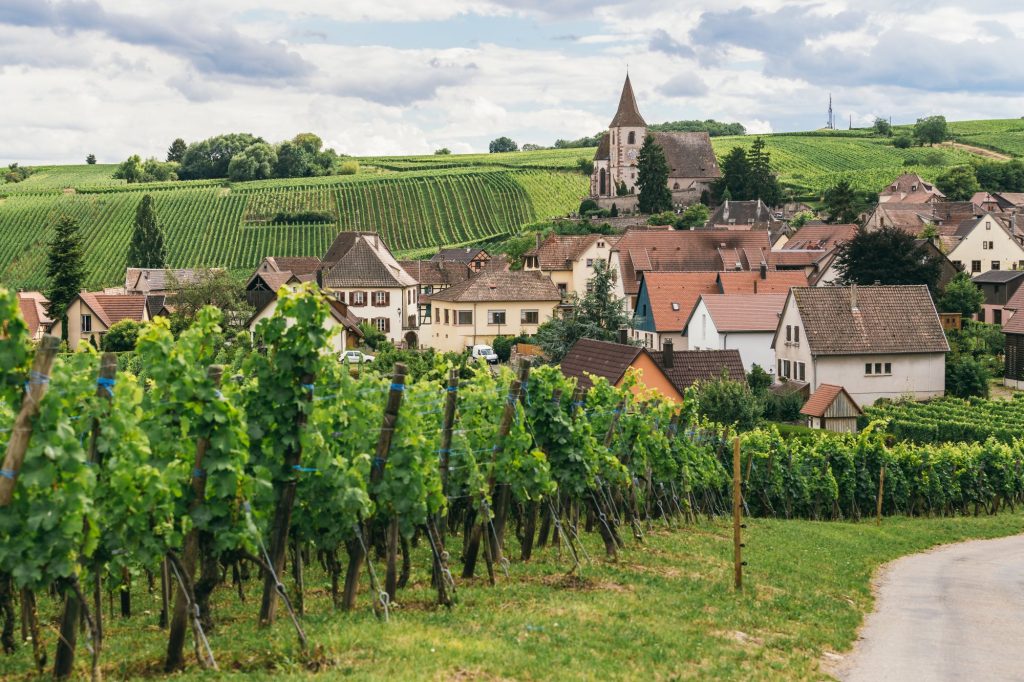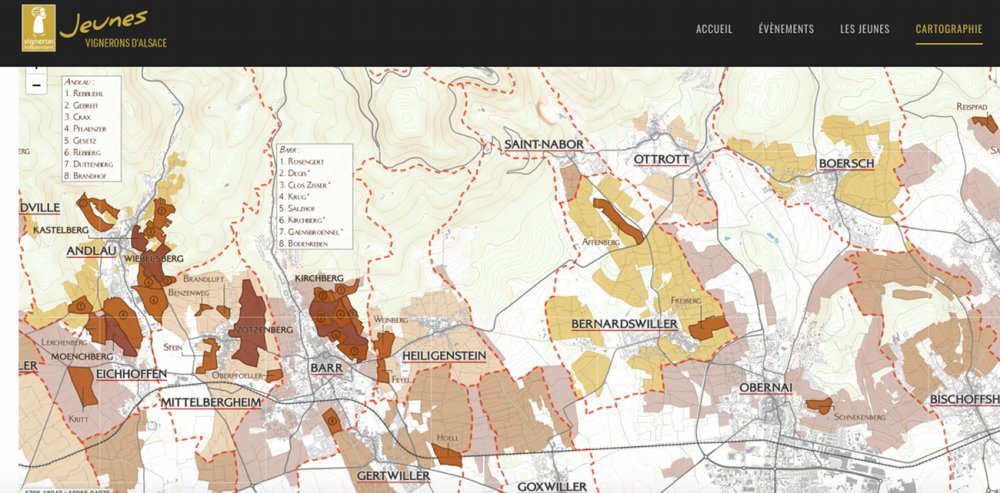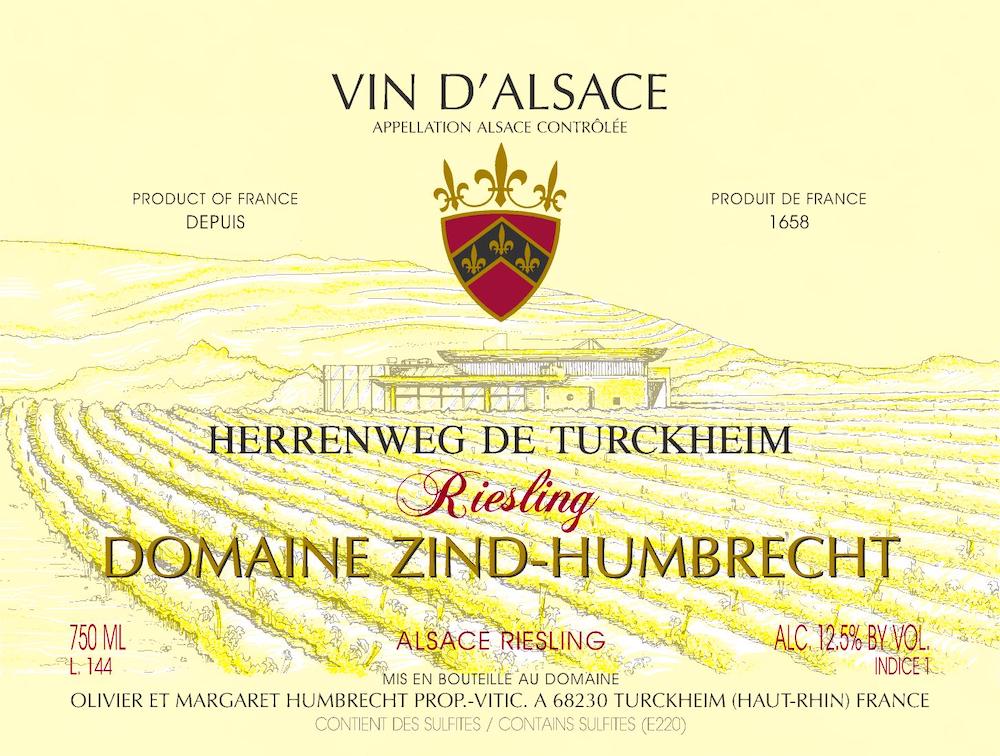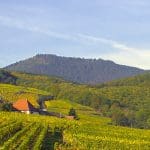Alsace Wine Types and Classifications: From Crémant to Grand Cru Pinot Noir
By: Barnaby Eales / Last updated: May 2, 2025
INTRODUCTION
The rise of Crémant d’Alsace continues unabated: more than a third of Alsace wine bottles are now Crémant d’Alsace, often made in the same quality as Champagne but at more inviting prices. Likewise, Alsace Pinot Noir is sold at more accessible prices than Burgundy’s Pinot Noir and is increasingly sought after. In a changing climate, top-end Pinot Noir, Alsace’s only permitted red grape variety in appellations, is gaining prominence; since July 4, 2024, there are now three Pinot Noir Grand Cru appellations.
Discover More About French Wine

Read More in Our Guide to Understanding French Wine Types and Classifications
Most Alsace wines are a single variety of white wines, with the best made from its tantalizingly racy and age-worthy dry Riesling. As demand for sweet wine declines, producers are shifting their focus toward dry and orange wines from Gewurztraminer. However, due to Gewurztraminer’s high alcohol content, some winemakers are moving away from it, instead rediscovering the underrated Sylvaner—a deliciously refreshing, versatile, acidic, dry white. Both styles and traditional Alsace bottles are evolving in response to these trends.
Until 2024, producers were obliged to use tall, slim ‘flute’- shaped bottles in the Germanic style. New rules adopted this year mean producers can now use slightly shorter, fatter bottles.
More than 36% of Alsace vineyards, grown on a mosaic of at least 13 soil types, are certified organic, and more than 8% are biodynamically farmed. This north-eastern region of France, protected by the Vosges mountains – a rain shadow- provides producers with a dry, semi-continental climate with relatively low rainfall (Colmar, its wine capital, is one of France’s driest city) and a relatively long growing season, allowing producers to make fine, age-worthy wines. Despite changes in style in recent years, the intensity, fountain-like freshness and bracing, natural acidity, and aromatic features remain present in many Alsace wines.
As veteran Alsace winemaker Olivier Humbrecht MW says:
“Alsace’s wine identity, its DNA, remains intact; what’s changing is the personality of Alsace wines.“
Learn more about the Alsace Wine Region
The History and Origin of the Alsace Wine Classifications
On April 20, 1972, four thousand winemakers brought Colmar to a standstill, protesting against bulk wine and advocating for the bottling of all Alsace appellation wines. France had approved the Alsace AOC appellation a decade earlier, in 1962, but there had been no rules on bottling.
The protest led to a new French law of July 5, 1972, which made it compulsory to bottle wines (other than wine transported between Alsace wineries) with the registered designation of origin ‘Vin d’ Alsace’ or ‘Alsace’ in the départements of Bas-Rhin and Haut-Rhin. Determined to preserve the quality of Alsace wines—especially their aromatic character, which bulk transport over long distances had compromised—vignerons drove the regulatory change.
More than 50 years later, a new generation of vignerons is campaigning to introduce a Premier Cru tier to the AOC Alsace appellation – an economic and qualitative mid-way point between AOC Alsace and AOC Grand Cru Alsace.

The 60 producers in the Association des Jeunes Vignerons of Alsace, presided over by Julien Boehler, a dynamic producer of terroir-driven wines, are leading the charge in producing and promoting organic and quality terroir-driven production. This Association of Young Vignerons developed Alsace’s first-ever registered map of its Lieux Dits in 2020. There are understood to be between 200 and 300 Lieux-dits in Alsace.
ALSACE AOC
AOC Alsace wines must be made from one of the eight permitted grape varieties in the appellation, namely Riesling, Gewürztraminer, Pinot Gris, Pinot Noir, Pinot Blanc, Muscat, Chasselas and Sylvaner. In 2011, ‘AOC ALSACE was supplemented with two geographical designation names: the Communales (villages) and historic vineyard sites with specific soils known as Lieux-Dits.
AOC + Communes
Thirteen communes or inter-communal entities have been strictly defined. They may be indicated on the label in addition to the Alsace AOC, including Bergheim, Blienschwiller, Côtes de Barr, Côte de Rouffach, Coteaux du Haut-Koenigsbourg, Klevener de Heiligenstein, Ottrott, Rodern, Saint-Hippolyte, Scherwiller, Vallée Noble, Val Saint-Grégoire and Wolxheim.
AOC+ Lieu-Dit
These 13 village names can be given an additional designation: the aim is to identify quality products that highlight the special characteristics of the terroir. Even stricter production rules, including lower yields, are applied than for the communal wines.
The wines produced from these lieux-dits express several nuances: the fruitiness of the grape variety is combined with the minerality of the terroir; Alsace is one of the world’s most soil-diverse wine regions and home to soils including gneiss, granite, sandstone volcanic, schist, limestone, clay and the key subsoil, Gres de Vosges, a pink sandstone widely used to build churches and cathedrals in Alsace.
AOC Alsace Grand Cru
Created in 1972, AOC Grand Crus recognized 51 Lieux dits (historical and specific sites). In 2011, the 51 Grands Crus sites were acknowledged as appellations.
The GCs account for 8% of the Alsace vineyard area and between 3 and 4% of total production. Maximum yields are 55 hectolitres/hectare. The GC’s rules are the most stringent, ensuring the production of wines from low yields with a long aging ability.
💡Crémant d’Alsace
Crémant d’Alsace, a sparkling wine made the same way as Champagne, in the traditional method with a second fermentation in bottle. Crémant d’Alsace is made under strict rules, including the regulated technique of pressing clusters of whole grapes. Manual harvesting is obligatory for Crémant production under EU law. Crémant d’Alsace is aged for at least 12 months. With sufficient natural acidity, many producers age their Crémant over extended periods to make voluptuous and rich but brightly acidic, terroir-driven Crémant. Maximum yields are 80hl/ha.
Crémant d’Alsace is made using Chardonnay, Riesling, Auxerrois, Pinot Blanc, Pinot Gris and Pinot Noir. Created in 1976, Alsace is France’s most important Crémant production region. In 2023, it sold 40.3 million bottles of 108.1 million of Crémant produced in France.
Understanding Alsace Wine Labels and Designation.

Unlike other French wine regions, Alsace is traditionally known for putting the grape variety names on front labels, giving terroir indications less prominence. Wine is often easier to sell with the grape variety on the front labels.
However, indications of terroir have gained prominence thanks to a new generation of vignerons dedicated to defending the production of terroir-driven wines. Since 2011, producers have been able to label the Lieux-Dits (see above) on labels. Besides Crémant d’Alsace, most Alsace wines are officially 100% single-varietal wines, generally with the grape shown on front labels.
Clos means “enclosed vineyard” and is more common in Bourgogne. These singular vineyards often have a longer history than the Grands Crus. Clos are usually strong brand names for producers; Clos St-Theobald and Clos Saint Urbain, for example, are parts of Grand Cru Rangen, owned by Shoffit and Zind-Humbrecht, respectively.
Other bottle labels mention villages or communes, their Grand Cru status, and varying dry/sweetness levels.
🌟 Sweetness levels:
- Alsace Sec (Dry): sugar content does not exceed 4g/liter.
- Demi-Sec (Medium-Dry): sugar content between 4 g/l and 12 g/liter.
- Moelleux: (Sweet) -sugar content between 12 g/litre and 45 g/liter.
- Doux (Sweet): sugar content exceeds 45g/liter.
The terms “Cuvée” (used for a wine blend or special lot) and “Réserve” (suggesting select or superior quality) are commonly found on Alsace wine bottles, though they lack official legal definitions.
Vendanges Tardives: a sweet wine crafted from late-harvested grapes with naturally higher sugar levels. These grapes remain on the vine longer, losing moisture and allowing for the production of luscious, rich, and intensely concentrated wines.
Sélection de Grains Nobles: a dessert wine made from grapes affected by botrytis, or noble rot, aged for a minimum of 18 months before release. This and other sweet wines are produced under strict regulations governing harvest timing and ripeness levels.
“Vieilles Vignes” means old vines at least 25 years of age.
Gentil d’Alsace is a good-quality, easy-drinking, blended wine with at least 50% noble varieties. Any other Alsace AOP grape can be used in blends, and the base wines must be vinified separately. Vintages must be labeled on bottles. Some producers believe field blends are the best approach for serious wines. In this case, the grapes are typically vinified together and produced under a vineyard name. Marcel Deiss is one of the staunchest advocates of using field blends to express Alsatian terroir.
L’Edleswicker or ‘noble blend’ are still simpler and usually inexpensive wines made from blends of white grape varieties. These two types of wine do not have the same stringent production/aging rules and are simpler, rather than complex, gastronomic wines. Alsace AOP wines labeled Edelzwicker do not need to be vintage-dated, nor are they even required to contain more than one grape. In practice, they are blends; however, they do not need to indicate any percentages or grapes on the label.
🍇 Seven Alsace Grape Varieties
Four Noble Grape Varieties are traditionally judged to be ‘noble’ in terms of quality production and their ability to express the terroirs and typicity of Alsace. In 1975, when Alsace first designated its grand cru terroirs, only four Alsatian grape varieties were granted the prestigious grand cru status: Muscat, Riesling, Pinot Gris, and Gewurztraminer. In a changing climate, the notion of the ‘famous four’ is becoming somewhat outdated: there are seven key grape varieties in Alsace, including Pinot Blanc, the in-demand Pinot Noir – now made in three Grands Crus sites and the remerging Sylvaner –made in the Grands Crus Zotzenburg vineyard since 2006.
🍇 Riesling (18% of vineyard area)
The King of the white grapes: Steely with floral aromas, pronounced acidity, and minerality, Alsace Riesling wines are among the world’s most age-worthy whites. Since 2008, and with alcohol levels rising, Alsace Riesling is usually made in a dry style.
🍇 Gewürztraminer (15% of vineyard area)
Alsace’s most aromatic grape. It produces rich, full-bodied, deep yellow/ golden wines with lychee and grapefruit flavors and is often used to make sweet Vendange Tardive wines. Relatively low in acidity and high in alcohol, and with sweet wine sales falling fast, growers in Alsace are switching to other grapes.
Gewurztraminer is a pink-berried clone of the traditional grape Traminer, which steadily replaced it in Alsace’s vineyards throughout the latter half of the 19th century. Another pink variant of Traminer—known as Savagnin in the Jura—retains a few plantings around the commune of Heiligenstein in the Bas-Rhin; the grape is known locally as Klevener. This Savagnin Rose, or Klevener de Heiligenstein, is less intensely aromatic than Gewurztraminer but higher in acidity.
Five communes may bottle this wine varietal under the existing Alsace AOP:
- Heiligenstein
- Bourgheim
- Gertwiller
- Goxwiller
- Obernai
🍇 Pinot Gris (17% of vineyard area)
Once known as Tokay D’Alsace, young Pinot Gris has stone fruit flavors with a hint of smoke. With good acidity, wines can age, becoming buttery and biscuity. Pinot Gris is also used in blends to make Crémant.
🍇 Muscat (3 to 4% of vineyard area)
Made dry, Muscat wines have a grapey aroma and flavor. They have low acidity and alcohol and are traditionally good as an apéritif.
🍇 Pinot Noir (13% of vineyard area)
On July 4, 2024, Grand Cru Vorbourg was officially recognized as a terroir where Pinot Noir, Alsace’s only authorized red grape variety, can be made under the AOC Alsace Grands Crus appellations. Vorbourg’s approval follows the recognition of Kirshberg de Barr and Hengst Pinot Noir Grands Crus in 2022. Reflecting its growing prominence in Alsace, Pinot Noir plantings increased 30% between 2003 and 2024. In a changing climate, Pinot Noir in Alsace has deepened in color and become more powerful. Still, it retains bright red and black fruits, with deep concentration made from low yields, minerality, and Alsace’s trademark pronounced acidity.
🍇 Sylvaner, a remerging star grape (4% of vineyard area)
Once widely planted in Alsace, Sylvaner, with aromas of white flowers, apple, and citrus fruit, was replaced several decades ago with the lesser Auxerrois and Pinot Blanc for the sparkling wines. Hugely underrated, with appropriate levels of acidity and moderate alcohol in a changing climate, Sylvaner is enjoying something of a comeback.
Winemaker Thomas Larmoyer of Soil Therapy Wines, a rising star of Alsace, shows how fine, delicious, layered, balanced, and versatile Sylvaner can be. Larmoyer’s makes a fine-textured, lees-aged, more straightforward La Geste 2023 wine together with the oak-aged and more complex and concentrated Sylvaner Reserve 2023.
🍇 Pinot Blanc (25% of vineyard area)
This variety is the most planted grape and is commonly blended with Auxerrois to make base wine for the growing production of Crémant D’Alsace.
Consumer Tips: Choosing and Understanding Alsace Wines
Spending time looking at both the front and back labels is always rewarding. Traditionally, unlike other regions of France, the grape variety is stated on the front label of Alsace wines, but now so are terroir factors; look for Lieu Dit plus a name or a village name and the producer’s name. However, some Lieux Dits do not state the grape variety’s name on the label. These wines are from small historic vineyards with specific soils sold at mid-price between generic AOC Wines and Grand Cru wines. Grand Crus wines are usually sold at lower prices than the top-end classed growths of Burgundy.
Many Alsace wines are organic and or biodynamic, so look for the green EU leaf logo for certified organic production and biodynamic logos or details on the back label. Also, Looking for terroir indications on labels made by dedicated vignerons is important as most Alsace wines are basic AOC-level wines made by big negociants dealers and cooperatives. Regarding sweetness levels, some producers like Zind-Humbrect have a 1 to 5 sweetness level on back labels.
With changing consumer habits in terms of healthier food and quality wine drinking, Alsace caters perfectly to the contemporary demand; wines show freshness and not excessive alcohol levels, the bright intensity of flavors and aromatics to a differing degree, and acidity that is now drier with fewer calories.
Crisp dry Crémant is a valid alternative to Champagne for aperitifs and meals. There is a wide range of white wine styles for fish, sushi, vegetable salads, and white meat. Sylvaner and Riesling pair well with seafood—riesling pairs well with goat’s cheese and many non-red meat dishes. Fine Alsace Pinot Noir served at 12C has an aromatic side to its character. It is often full-bodied and structured, enough for red grilled meats.
Grand Cru and Vendanges Tardives wines are rich, concentrated, and can age for decades. Vendange Tardive and Selections Grain are dessert wines that can be enjoyed with strong-flavored cheeses, including blue ones.
Conclusion
Winemakers in Alsace reckon that in terms of still wines, fine expressions of Riesling and Pinot Noir will continue to steal the limelight. Sylvaner too. In a changing climate with rising temperatures, new grape varieties, including Chenin Blanc and Nebbiolo, and disease-resistant grapes, could become authorized soon. Olivier Humbrecht MW says he and his son uprooted some Gewurztraminer vines to experiment with Sangiovese vines on southern-facing slopes. Other producers have experimented with Syrah. Younger winemakers are more inclined to experiment with making wines from blends of grape varieties.
Alsace’s new generation of vignerons is helping raise the profile of Alsace beyond France, where most of its wine is sold. Having secured several orders in top Paris restaurants and wine shops this week, Victor Roth, a young winemaker at the organic and historic estate Domaine Robert Roth, was in a jubilant mood when I spoke to him while on his return train journey from Paris to Alsace. Roth says terroir-driven Alsace wines have strengthened their reputation as the vital contender in price and quality to rival regions such as Burgundy and Champagne.
Roth said:
“Just a few years ago, selling Alsace wines in top restaurants and wine shops in Paris was a more difficult prospect.”
References
Other than my own knowledge and experience, here are some references:
- Young Alsace Vignerons Association
- Committee Interprofessionel des Vins de Alsace- Alsace Wine Board
- The Oxford Companion to Wine, 5th Edition. Ed: J lia Harding MW.
- Alsace Winemakers Association of Alsace
- Soil Therapy (Thomas Larmoyer)
- Domaine Robert Roth (Victor Roth)
- Domaine Boehler (Julien Boehler)
- Domaine Zind Humbrecht (Olivier Humbrecht MW)
More information
If you would like us to customize an exclusive luxury tour, contact us and let us know your travel plans. We offer luxury food and wine tours for private groups of a mininium two guests. In addition, all of our private, chauffeured tours are available year-round upon request.



